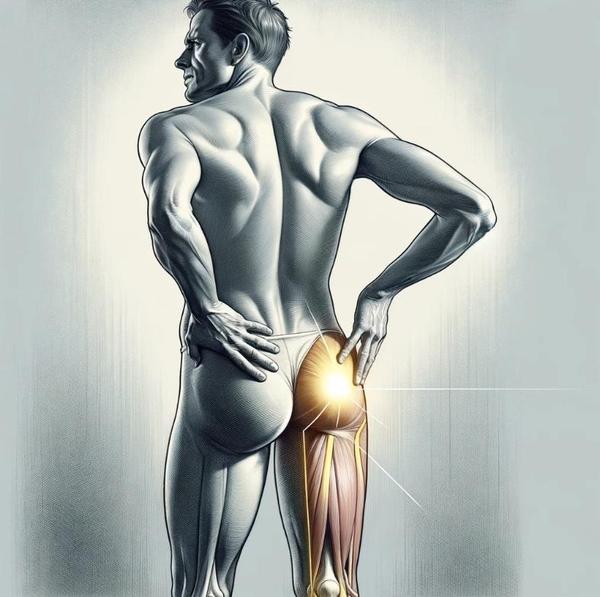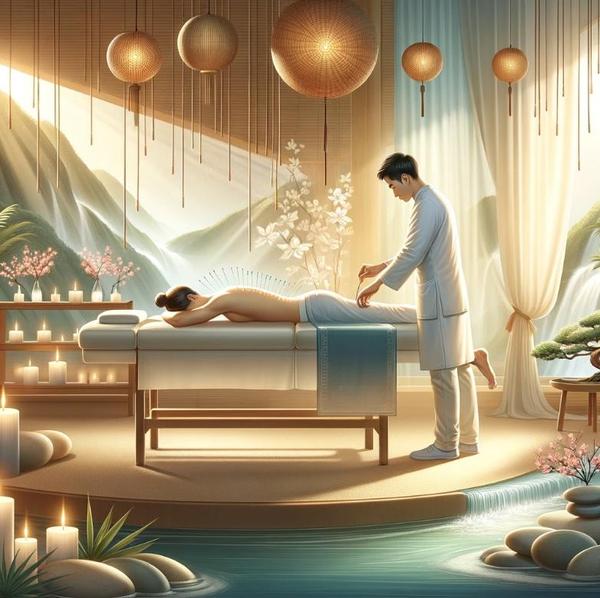TCM Approach to Sciatica:
Comprehensive Guide to Conquering It!
Are you or someone you know affected by the nagging pain of sciatica? Dive deep into this edition as we dissect the causes and remedies of sciatica from multiple medical perspectives: Traditional Chinese Medicine (TCM), Functional Medicine, and Sports Medicine & Physical Therapy.
Western Medicine Diagnosis & Treatment of Sciatica:
Western medicine adopts a disease-oriented approach. It focuses on identifying specific diseases or disorders based on a combination of signs, symptoms, laboratory tests, and imaging studies. The diagnosis is typically linked to a known pathological process or anatomical issue, such as a bacterial infection, a broken bone, or a hormonal imbalance.
Western treatment aims to address the disease directly, often through medications, surgery, or other interventions to correct the underlying problem or alleviate symptoms. Treatments offered are painkillers & muscle relaxers, nerve block & steroids, anti-depressant and anti-convulsant medications.
Side effects of the pharmaceutical approach include:
- Stomach upset
- Dizziness
- Drowsiness
- Addiction dependency (in the case of opioids)
- increased risk of heart problems
- Increased risk of gastrointestinal bleeding
- May have limited effectiveness
- Does not address the root cause
Key Differences
- Philosophical Foundation: TCM is based on ancient Chinese philosophies that emphasize balance and harmony within the body and with the external environment.
- Diagnostic Process: TCM differentiation focuses on identifying imbalances and patterns of disharmony based on subjective signs and symptoms, along with pulse and tongue diagnosis. Functional medicine incorporates laboratory tests and imaging, to identify diseases.
- Treatment Approach: TCM treatments are personalized, aiming to restore the body’s balance and address the root cause of the imbalance.
- Conceptual Framework: TCM uses concepts like Qi, Yin/Yang, and the Five Elements as its framework, in addition to physical assessment.
🌿 Possible causes of Sciatica from a Traditional Chinese Medicine (TCM) Perspective:
Qi and Blood Stagnation: Often, if Qi and blood don’t flow smoothly, it can cause pain.
Kidney Deficiency: Chronic lower back pain, including sciatica, can be linked to a deficiency in kidney Qi or essence.
External Factors: Conditions like wind, cold, and damp can invade the body causing pain.
- Meridians Involved: The bladder and gallbladder meridians are most commonly associated with sciatica.
- Qi Gong Exercises: Incorporate “Gallbladder #2”. You can find this in my book, “Your Qi Matters,” on online https://www.youtube.com/watch?v=FO1Z4XJlxIo.
🌿 Functional Medicine Perspective: Diet plays a pivotal role. Reduce or eliminate inflammatory foods:
- Gluten, Dairy, and Sugar: Recognized as culprits in inflammation, these can aggravate symptoms.
- Coffee: While a favorite for many, it’s also acidic and can exacerbate inflammation.
🌿 Sports Medicine & Physical Therapy Perspective: Strengthening the core and lower back is crucial.
- Piriformis Stretch: Sit on a chair, ankle over opposite knee, and gently lean forward.
- Knee to Chest Stretch: Lie on your back, pull one knee towards your chest, holding the leg at the calf or thigh.
Acupressure Points:
- GB30 (Jumping Circle): Located deep at the center of the buttock. Applying pressure can help alleviate pain related to sciatica.
- BL60 (Kunlun Mountains): Located behind the ankle, between the Achilles tendon and the ankle bone. It’s known for its ability to alleviate lower back pain.
Acupuncture for Sciatica:
Acupuncture for sciatica is increasingly recognized as a superior treatment option due to its holistic approach, minimal side effects, and effectiveness in addressing both the symptoms and root causes of pain. Unlike conventional treatments that may rely heavily on medications with potential for dependency or side effects, acupuncture offers a natural, drug-free method to stimulate the body’s own healing mechanisms. By targeting specific points along the meridians associated with the sciatic nerve, acupuncture can help reduce inflammation, enhance circulation, and relieve pain. This not only provides immediate relief from the discomfort of sciatica but also promotes long-term health and balance within the body. Furthermore, acupuncture’s ability to reduce stress and improve overall well-being makes it a comprehensive treatment option that addresses both the physical and psychological aspects of sciatica, offering a path to recovery that is both gentle and effective.
Final Thoughts: Understanding sciatica from different perspectives enriches our knowledge, granting us more tools to tackle it.
If you found this information helpful, please share it with others! Together, we can foster a community of informed, health-conscious individuals.






